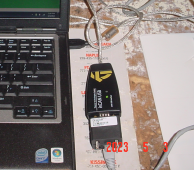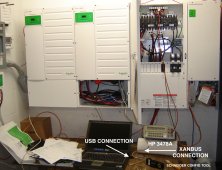Darcy Costa Rica
New Member
- Joined
- Jun 3, 2022
- Messages
- 39
Good day,
I recently purchased a system that includes:
3 XW Pro Inverters
2 MPPT 100 600 Charge Controllers
2 MPPT RS Disconnect switches
Insight Facility
Conext Configuration SW Tool
2 battery racks with 61KWh of EG4-LL batteries
EG4 battery charger (new product)
12KW of Solarever panels
Now comes the fun part. Here is what I am trying to accomplish:
My guess is that I am not trying to do much that is different than many other people.
What do I need to set up on these inverters to get them powered up?
Many thanks!
I recently purchased a system that includes:
3 XW Pro Inverters
2 MPPT 100 600 Charge Controllers
2 MPPT RS Disconnect switches
Insight Facility
Conext Configuration SW Tool
2 battery racks with 61KWh of EG4-LL batteries
EG4 battery charger (new product)
12KW of Solarever panels
Now comes the fun part. Here is what I am trying to accomplish:
- I am in Costa Rica and am just finishing a new house.
- The power is very bad. Outages happen daily. They may be short, but several times per day my AIMS inverter (2KW for computer & electronics) beeps and jumps in to stabilize the power. People have constant appliance problems (ie. DEAD). I think power issues are a big part of the problem.
- This is a small country and I have not found a Solar company in my area that works for me. Language is an issue. I'm from ??
- Service is very difficult, so I like the idea of redundancy and separation of functions. One inverter down and I can adapt. One charge controller down and I can still generate 7KW.
- Power is expensive here. Over 23c / KWh after using 200 KWh in the month.
- Selling power to the Utility is very difficult and not useful. No money is paid back. Only credits are applied, and they expire every year. Registration and licensing for this can take years. I do not want any power going into the grid.
- I have split my property into Grid panels (not critical) and PV panels. All the large power-consuming items are propane (2 on-demand gas water heaters, Cooktop, clothes dryer). I ran 240V to each of these items so I can convert them to solar if I have the sunshine and PV power. Only the wall oven is electric and it consumes about 4KW max.
- My big spreadsheet of electrical items totals about 20KW if I turn on everything on the property that will be powered by the inverters. So, to avoid the issues of having 3 XW Pro inverters hooked up, I may only wire 2 and keep the 3rd as a backup.
- My goal is to use the Grid to charge batteries, only if there is insufficient PV generation to recharge the batteries. This will happen in the rainy season. We get over 20 feet of rain here per year. Yes, that's correct.
- I installed a 200 Amp Eaton Transfer switch to manually switch from Solar <--> Grid. I wanted independent control over how the property is powered.
- There are 3 buildings:
- Workshop with electrical room for inverters and batteries. The electrical room is Air Conditioned. All power enters here. A few loads in the Workshop are powered with the Grid (Welder and EG4 Battery Charger). The main PV breaker box in the electrical room can be manually switched from Solar <--> Grid with the Eaton Transfer switch. The main PV breaker box supplies the other two buildings...
- House with large PV breaker box and very small Grid breaker box (currently powering nothing)
- Garage with PV breaker box and small Grid breaker box (currently powering nothing)
- I went to University about 100 years ago for EE, but my whole career was in software, so I remember enough to be dangerous. There are a lot of terms in this business that make me scratch my head.
My guess is that I am not trying to do much that is different than many other people.
What do I need to set up on these inverters to get them powered up?
Many thanks!






